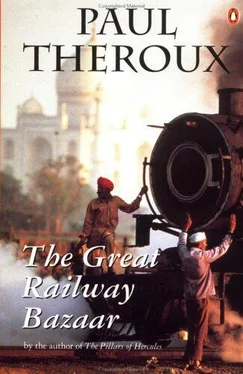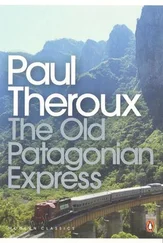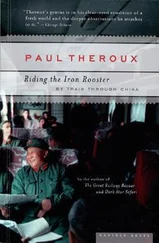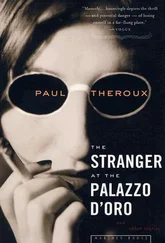'Now where would geishas be going at this hour?'
'Maybe to a crab.'
I thought a moment.
He said, 'You like crab?'
I said, 'Very much.'
'Go?'
I had to say no. What I wanted to see was the resort, Jozankei, twenty miles from Sapporo in the mountains, where there is a hot spring. It was the influence of Kawabata, that novel that seemed more and more to me like a version of Chekhov's 'The Lady With the Little Dog'. Shimamura, on holiday, makes a casual arrangement with a geisha at a hot-spring resort; and then he is possessed by her and goes back, love-struck against his will. He says, 'Why else would anyone come to such a place in December?'
Mr Watanabe agreed to take me, and he said, 'Buff?'
'Maybe buff or maybe look,' I said.
He understood, and the next day we went to Jozankei.
Buff is a good word for the Japanese bath, since it consists not of washing but of lying naked in a steamy communal pool and poaching yourself into a sense of well-being. But at 5,000 yen, nearly twenty dollars a bath, I realized I did not have the yen to be soaked that much. In any case, the snow at Jozankei had reached blizzard proportions: mattresses of snow clouds hung over the ugly little hamlet, which had the look, such was its heaped concentration, of having slipped from the walls of the beautiful mountain gorge. It snows throughout the winter in Jozankei, and it gets so deep, the people tunnel under the immovable drifts. The roofs have wide Swiss eaves; the hydrant markers are fifteen feet high.
The falling snow muffled all sounds; it had stopped the cars and kept people indoors. It still fell, adding to the drifts of dry flakes already there, collecting on the floor of the gorge, reducing visibility, and making the low houses into a few dark shapes in that whiteness – a jutting eave, part of a wall, a smoking chimney pipe. Here was the top half of a sign, and, in the blur of whirling snow, a pine grove shattered into simple shapes by lumps of snow. I startled a flock of crows and only when they flew up did the trees they were hiding appear. There were more crows feeding on scraps at the back of a little inn; they took off and roosted in the white air, their black fretful feathers indicating the branches. I wanted to snap a picture of the crows taking flight in the snow. I clapped my hands and rushed at them. They didn't move. I tried again and fell over into a snowbank. As I got to my feet a Japanese woman with a basket went by; she spoke loudly in Japanese and tramped away. Mr Watanabe laughed and covered his face.
'What did she say?'
He hesitated.
'Tell me.'
'She say you are eccentric'
I turned to the woman and cawed, blawk! blawk! blawk! She turned and yelled (according to Mr Watanabe), 'What did I tell you!'
We walked to the edge of the hamlet, to a slope where some snowbound skiers, three smudges in the blizzard, were waving their arms like stranded birds. No sound; only their blurred motion. Then we retraced our steps and found a restaurant. We ate while our shoes dried on the kotatsu. This charcoal brazier, the main source of warmth in most Japanese homes, is only one item in a lengthy charge sheet that proves the Japanese work in the twentieth century and live in an earlier one. We left towards the middle of the afternoon. Less than half a mile from Jozankei the snow let up: it turned sunny, and the mountains were large with light. I looked back to see Jozankei dark, grey, a storm still hanging over it like a curse.
Mr Watanabe said, 'You want to see Doctor Crack?' One of the most respected figures in Sapporo's history is William S. Clark, a Massachusetts man. I had never heard of him, but learned he had been president of Massachusetts Agricultural College in Amherst. A stern fellow with an intelligent forehead and a saloon-keeper's moustache, Dr Clark was one of the founders of Sapporo's Agricultural College in 1876. His statue in bronze is one of the holy objects of the city. The story is that after eight months as Sapporo's dean he climbed on his horse and headed back to Massachusetts. His students followed him to the outskirts of Sapporo where, at Shimamatsu, he wheeled around and lectured them. His parting words were, 'Boys, be ambitious! Be ambitious not for money, not for selfish aggrandizement, not for the evanescent thing which men call fame. Be ambitious for the attainment of all that a man ought to be.'
This ambiguous valediction excited the Japanese ('The phrase, "Boys, be ambitious!" has since embodied the life target of our young people.' – Sapporo Handbook), but the idea of a man from Mass. Aggie being remembered for telling the Japanese to be ambitious struck me as hilarious. Doctor Crack!
I gave my lecture. Over three months earlier, in Istanbul, I had spoken on the tradition of the American novel, implying that it was special and local. In India I contradicted most of this, and by the time I got to Japan I had come full circle, claiming that there was no real tradition in American writing that was not also European. The novel was of the West, and even the writers we considered most American, like Twain and Faulkner, were as affected by the British novel as by their native inspiration. It was as easy to define the American tradition as Borges did the Argentine one: all of Western culture. This thesis, which might be true, disconcerted the Japanese. They stood and bowed at the end of the lecture, saying, 'We have not read Mr Borges, but we have read Mr Leslie Fiedler. He has written as follows -'
'Why don't you stay and have a drink?' I said afterwards to the pretty Japanese girl in the hallway. It was the Shimamura in me talking. She hid her face in her fur collar and tossed her black hair.
'I can't,' she said.
'Why not?'
'Because,' she said, and started to make her getaway, 'because I am so shy!'
My offer was given impromptu, and it had to be turned down for that reason. It was the wrong time: the Japanese have a sense of occasion, which the following story may illustrate. That same night in Sapporo, an American woman, whose daughter was in a Japanese kindergarten, was invited to dinner by another mother, whose daughter was in her child's class. The dinner had two purposes – to introduce the American woman to Japanese culture, and to butter up the teacher, who had also been invited. This feeding of teachers – treating them at expensive restaurants – is a common feature of Japanese courtesy and presumably guarantees that your child will get the friendly attention he deserves. The dinner was served by two geishas; three more geishas played music, and the food came in such great quantities that after an hour the three diners abandoned the pretence of eating and spoke on subjects of mutual concern, the Japanese women revealing considerable interest in the age at which American ones begin menstruating.
The food stopped coming; more tea was brought, and the Japanese mother took out a parcel wrapped in cloth. She said it was a surprise and demurely she undid the ribbons and wrapping and took out a scroll. She said it was quite old, painted perhaps 150 years ago, and she laid it on the floor. The geishas put down their instruments and the eight women crouched on the tatami of this private restaurant cubicle while the owner of the scroll unrolled it eight inches. This was a panel showing a sturdy bald monk leering at a geisha. There was a poem beside it, which was read and translated before the next panel was shown. Here the monk was fumbling with the appalled geisha and tearing at the lower half of her kimono. The poem accompanying this picture was recited as ceremoniously as the one before, and the lady went on unrolling. This progressed, picture by picture; fully extended, the scroll showed a pornographic sequence of the lusty monk pictured in various stages of rape. Later on, I was able to examine it, and I can testify that the wounded vulva and the tumescent pistol-like penis were rendered in vivid detail, though I agree with the English critic William Empson, who (writing on Beardsley) said,.. the Japanese print-masters, too, lose their distinctive line when they turn aside and create Porners.' In the eighth panel the monk showed signs of fatigue, in contrast to the geisha who looked mightily aroused: she had redder eyes and she appeared in more predatory postures. Panel nine showed her seizing the fleeing monk's flaccid penis; panel ten had the agonized monk on his back and the geisha hunkered over him unsuccessfully stuffing his penis into her; and panel eleven, the clincher, depicted a much-aged monk being forced to fondle her: the geisha, wearing an ecstatic smile, had a firm grip on his hand, which she was directing against the bright bead of her clitoris. The Japanese mother clapped her hands and all the women laughed – the geishas loudest of all.
Читать дальше












